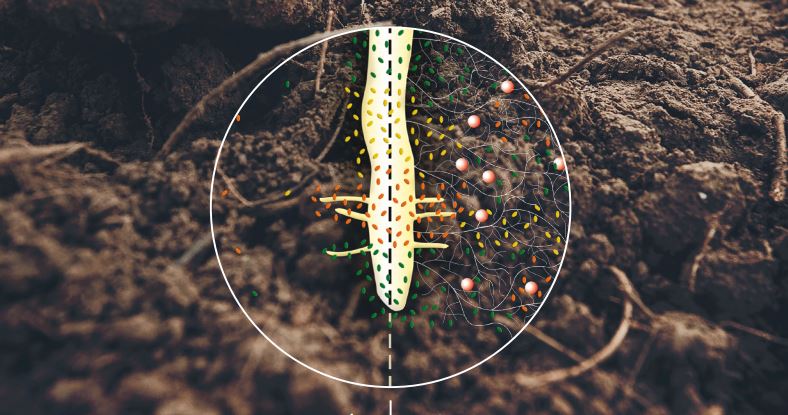Research: Better start after using MycorDip
Many fruit farms in the province of Zeeland (The Netherlands) are completely dependent on rainfall for water supply. What alternatives do these companies have to reduce production loss caused by drought? The POP3-project ‘More fruit with less water’ has investigated whether mycorrhizal fungi can help.
Written by Rien van der Maas, Peter van Elk and Arjan de Bruine (WUR), rien.vandermaas@wur.nl

Mycorrhizal fungi naturally occur in soil. They fuse with plant roots and by that, they collaborate with each other (mycorrhiza). The plant provides the fungus with sugars, and the fungus provides the plant with additional water and minerals. Thanks to the fungus, the root volume of the plant increases. Additionally, roots are better branched in the soil because of the fine mesh of the fungus. The reason trees are injected with mycorrhizal fungi is that in the first years during drought, they have a better start in terms of growth and production during the first years. MycorDip products are believed to work better if no fertilizers are used at time of planting. The idea is that the salts are harmful to the development of the mycorrhizal fungi. In a first experiment with apple (Junami), we initially started using fertilizers at time of planting. After the first two years, we did not find any effect of MycorDip Universal on shoot growth.
In the next two experiments with pear (Conference) and apple (Elstar), we used an alternative organic fertilization (see Table 1) during the first two years of growing. After two years, we switched back to using regular fertilizer. Limited drip irrigation was used in the Conference, while no water was given in the Elstar. The results show that the use of MycorDip combined with organic fertilization in the first two years during drought provides a better start in terms of growth and production than standard fertilizer.
| Treatments | Standard | MycorDip Universal |
| MycorDip Universal for plants | no | Yes |
| Plant hole treatment per tree | 5 g MAP, 5 g Ureum, 5 ml Humifirst in 5 liters of water | 5 liters of water (not for Elstar due to planting in wintertime) |
| 1st black strip fertilization shortly after planting | 19 g Calcium Nitrate 15.5% | 9 ml Fulvic 25 in 60 ml water in plant hole, 45 g Biovin, 27 g OPF granulate |
| 2nd black strip fertilization July of 1st year of growth | 19 g Calcium Nitrate 15.5% | 27 g OPF granulate |
| 1st black strip fertilization May of 2nd year of growth | ||
| 38 g Calcium Nitrate 15.5% | ||
| 9 ml Fulvic 25 in 60 ml water, 45 g Biovin, 54 g OPF granulate | ||
| 2nd black strip fertilization July of 2nd year of growth | 38 g Calcium Nitrate 15.5% | 45 g OPF granulate |
| Black strip fertilization from 3rd year of growth | Identical |








